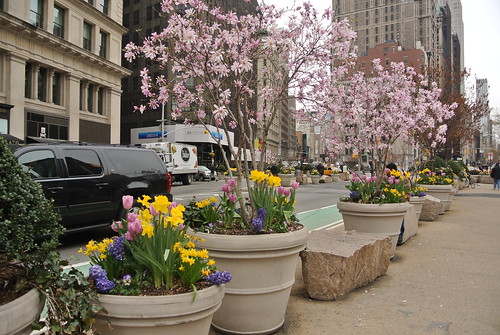In Monocle Forecast, branding strategist Hugo Macdonald wrote an essay decrying the decline of texture and praising the designers creating products that stimulate touch. He argues that the iPhone’s glossy surface fosters thoughtlessness, whereas sticky key pads forced us to contemplate every number we dialed. But smooth touchscreens aren’t the only technology disfiguring our sensory environments. Backlit screens, noise-cancelling headphones, and artificial sweeteners all change how we see, hear, and taste the world. Yet I’d argue that scent is the most endangered sense. We barely notice it at all.
Perhaps that’s unfair. We do notice scent, but usually when passing a garbage truck in mid-August and not when peeling open a brand-new magazine. This is unfortunate but understandable. Research suggests that we remember negative events better than positive ones so it stands to reason that we’d notice yucky smells over pleasant ones.
Society wants to annihilate unpleasant odors—or at least replace them with less gross ones. From Febreeze to Glade candles, marketers try to convince us that a musty smell begets a messy life. Inoculate your kids against the sulfurous smell of over-boiled broccoli with a plug in de-odor-ifier! If there’s a bad smell you can think of, there’s a product engineered to smother it.
Even cities attempt to erase smell. Complaints about food trucks frequently relate to the aroma of freshly grilled burgers wafting into nearby offices, causing unsolicited hunger pangs. Shops douse their stores in scents to lure in unsuspecting customers. While such actions might not fall under the category of deodorizing, they support the trend against natural aromas.
How did this trend evolve? The history of scent is a complicated with experts writing histories and arguing how a Viking town would have smelled. I am not an expert. But even a cursory glance at the history of scent demonstrates that eschewing natural smells is an invented fetish, one that has quite a bit to do with class.
Before marketers convinced us that a daily lather ensured both personal hygiene and spiritual well-being, cleanliness was an upper-class privilege. Yet we wouldn’t perceive these elites as pristine. Cleanliness was constructed through oils and herbs that doused onto clothes and handkerchiefs or contained in pomanders to sniff if a particularly smelly individual approached. Just think of smelling salts, which used aroma to help coerce people out of fainting spells. Even today, natural aromas are expensive, which emphasizes just how precious these compounds were—and how the elite must have prized them.
Yet it’s not just the monetary divide that characterizes the history of scent, but the lauded scents themselves. Rosewater, cloves, ambergris—the smells our ancestors fetishized weren’t pumpkin spice compounds or engineered to evoke memories of sea breezes. They acknowledged that pleasure existed in nature, even if it could be kinda stinky sometimes.
If only we could appreciate this today! Unfortunately, scent, like touch, is endangered. Consumer society stigmatizes anything other than the perfectly engineered compounds it produces. Why mess with a bouquet of real flowers (or, god forbid, a garden) when you can buy the experience with a one-touch whole room aromatizer? Erasing bad smells isn’t dangerous only because it separates us from the routine yuckiness of being human, but also because it inoculates use to the good aromas we encounter daily. Whether it’s the scent of freshly ground coffee at your favorite a café or the icy smell your loved one wears when they arrive home after work on a cold night, scent is one of our most basic ways of interacting with and appreciating the world. Let’s enjoy it.
